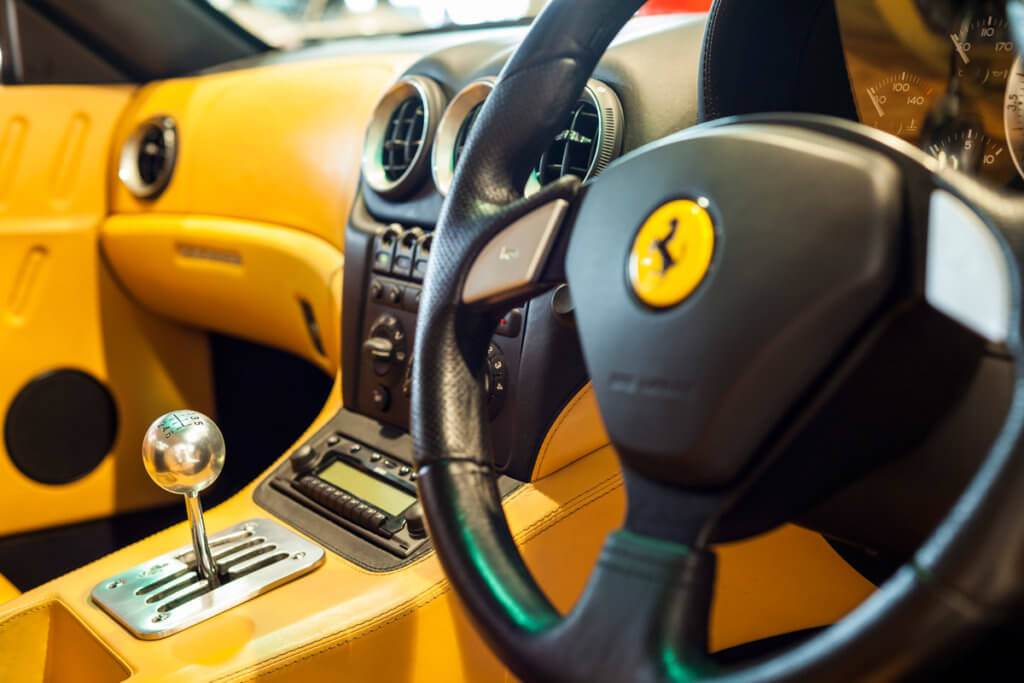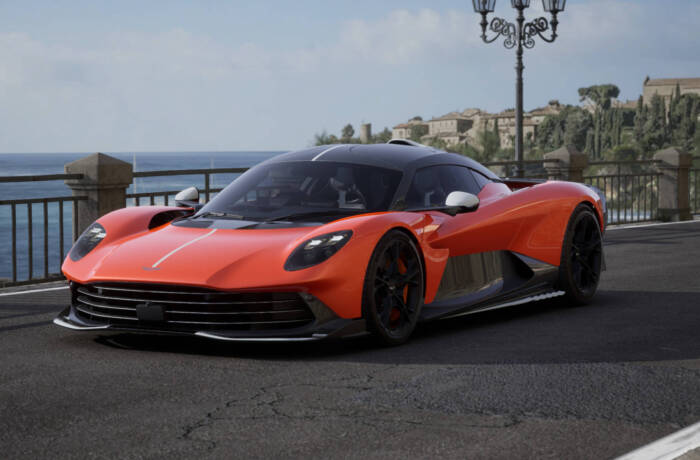By Darius Sanai, Editor-in-Chief
A few months ago I was invited to take part in a panel discussion on investing in modern classic cars, by the Financial Times, at its annual reader event in London. It was a very FT-type of festival: intellectuals, entrepreneurs, CEOs and private equity principals lining up quietly to listen to the likes of Zanny Minton Beddoes, editor of the Economist, superchef Heston Blumenthal, and economic and political commentators of the likes of Martin Wolf and Gideon Rachman. I had a little chat with Jancis Robinson, the most thoughtful of all wine commentators, ahead of her talk on discovery wines, and then took to the stage myself to converse with the FT’s own classic cars guru Simon de Burton.

As a quintessential Modern Classic, prices of the Ferrari 550 Maranello are set to rise ever higher – but only for the best examples
Modern Classics are a new category of collectible, loosely defined as cars made from 1985-2005. As well as being newer, more refined and more comfortable than traditional classics like a Jaguar E-Type or Mercedes 300SL Gullwing, and appealing to a younger generation, they tend to have been made in greater numbers. I made a good return on selling my own Ferrari Testarossa last year, but there were more than 7000 of those cars made, compared to dozens or hundreds of the multimillion dollar classics like the original Ferrari GTO or 275 GTB.
My message to FT readers was that they should choose carefully,  because abundance will act as a natural brake on values, and modern cars can suffer hard-to-solve electrical problems that older, simpler cars do not.
because abundance will act as a natural brake on values, and modern cars can suffer hard-to-solve electrical problems that older, simpler cars do not.
For you, my LUX readers, I have a rhetorical question. Would you buy a classic car because of its design and status, or because of its performance and reputation? Old classic cars, like the GTO, 275 GTB, E-Type, 300 SL, Aston Martin DB5, and others of the 1950s and 60s, are real beauties. They were created by (mostly but not wholly) Italian designers, to look beautiful, and then married to an engine.
They have an objective beauty which transcends the motoring world. I work in an environment which is light on car knowledge, but thick with design, fashion, and art expertise. These cars elicit as much admiration from a magazine creative as they do from a mechanic.
Read next: Hong Kong’s best bars
Modern cars are ruled by different principles: those of aerodynamics, engineering, performance, economy, safety and packaging. None of Sergio Pininfarina’s original designs would pass muster. Some of the most valuable modern classic cars don’t look interesting at all: try selling an Audi Sport Quattro short wheelbase or Porsche 993 Turbo S to a creative director and you’d get a blank look.
So I am going to go a step further than I did to my FT audience and say that if you wish to invest in a modern classic car, looks can be one of many important elements to take into consideration. The other important elements are driving quality, scarcity, brand, and the end-of-the-line factor. Ferrari will never make any more of its metal-gated manual transmission cars: they are all automated, “paddleshifts” now, much more efficient but with less soul. A Ferrari 575 or 599 with the manual transmission is the last such car (V12 Ferrari) ever to be made: it combines soul, driving quality, scarcity, brand and the end of the line kudos.

A rare Ferrari 575 Maranello with classic manual transmission, right hand drive and the Fiorano Handling Package; it is likely that there were fewer than 20 examples made, earmarking it for classic status
 But the canny collector goes further than that: he or she also identifies sub-brands within the category. There were more than 2000 examples of Ferrari 575 (2001-2005) made, a relatively large number. But only 246 of these were fitted with the gated manual transmission. The model’s handling was also vastly improved by its factory-option Fiorano Handling Pack, fitted to a minority of the cars. So with just 246 manual 575s made, and a minority of them with the “FHP”, the pool of ultra-desirable examples of this car is actually more limited than that of the legendary 1966 275 GTB/4, of which 350 were made, and probably more limited than that of the 1960 250GT SWB, of which 167 were made.
But the canny collector goes further than that: he or she also identifies sub-brands within the category. There were more than 2000 examples of Ferrari 575 (2001-2005) made, a relatively large number. But only 246 of these were fitted with the gated manual transmission. The model’s handling was also vastly improved by its factory-option Fiorano Handling Pack, fitted to a minority of the cars. So with just 246 manual 575s made, and a minority of them with the “FHP”, the pool of ultra-desirable examples of this car is actually more limited than that of the legendary 1966 275 GTB/4, of which 350 were made, and probably more limited than that of the 1960 250GT SWB, of which 167 were made.
Read next: LUX’s fine wine tasting at Villa Giuseppina
That’s the kind of calculation collectors of modern classics are making, formed part of my reasoning (apart from sheer desire) when buying my modern classic Ferraris, which also include a F512M, F430 Spider and 550 Maranello, all from 1995-2005. And while I would never claim my own Ferrari 575 (2004, manual, with “FHP”) is anywhere near as beautiful as one of the 1960s cars, it has a 1990s elegance and is rather nicer to drive – and far faster and more comfortable.
Cars are correctly seen as an alternative investment – I prefer the term “Investment of passion” – because they don’t provide a dividend, unlike shares, or an income, unlike a rental property. Unlike wine, however, and unlike art stored in a warehouse, they do, however, provide a return throughout your ownership. This happens whenever I pull the cover off one of my Ferraris, gingerly put the key in the ignition, turn it, let it warm for a couple of minutes, slink the metal gearlever into the slot in the metal gate, balance the aluminium gas pedal against the drilled metal clutch, and ease forward with the music of 12 Ferrari cylinders in my ears, for a day’s blast through the English countryside. It has to be a passion – and the return is both joy and, if you’re lucky, one day it will be monetary too. Because classic cars taken as a whole have been the best-performing investment of all of the past decade, according to – who else – the Financial Times.
All of LUX’s Ferraris are taken care of by Joe Macari, the official service centre in London, with the exception of the 550 Maranello, which is looked after by The Ferrari Centre.








